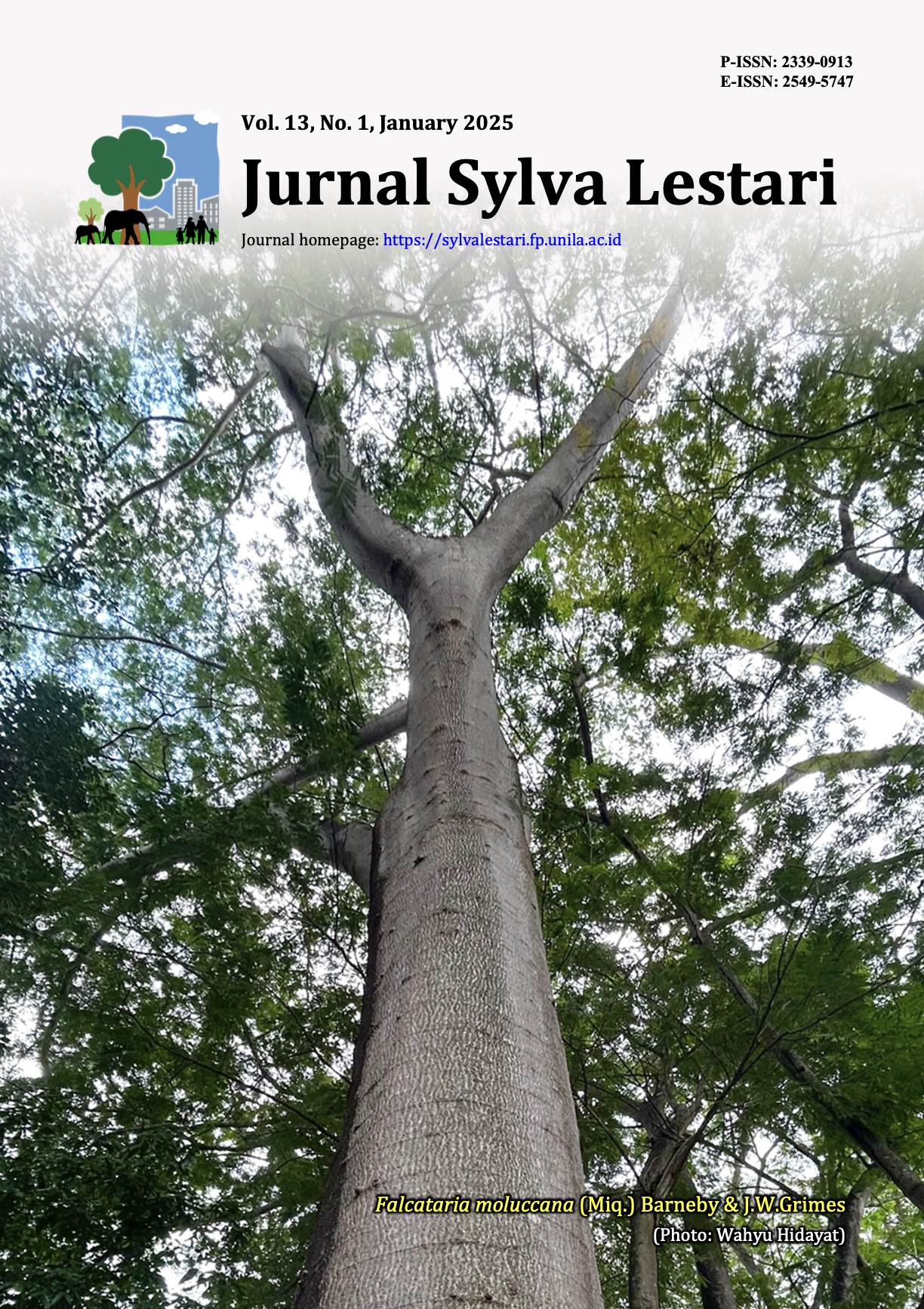Dimensional Stability and Wettability of Modified Samama (Anthocephallus macrophyllus) Wood with Boron, Citric Acid, and Heat Treatment
DOI:
https://doi.org/10.23960/jsl.v13i1.1056Abstract
This research aimed to address the leaching phenomenon of boron preservatives in wood. The subsequent investigation focuses on wood's dimensional stabilization and wettability after a two-stage impregnation process. Samama (Anthocephallus macrophyllus) wood was impregnated with boron (boric acid, borax, and a combination of both) at a pressure of 7 atm for 4 hours, with each preservative’s concentration set at 5%. After oven drying at 60°C until achieving a 15% moisture content, the next step involves a second-stage impregnation with citric acid (at a 5% concentration) under the same pressure and duration. The final step included heat treatment at 80°C and 160°C for 4 hours. The research results indicate that boron and citric acid enhance the dimensional stabilization of samama wood. The best dimensional stabilization treatment combines boric acid, borax, citric acid, and heat treatment at 160°C. This study confirms that citric acid improves the dimensional stabilization of samama wood, whether used with boron or not. Compared to treatments without citric acid and heating, the two-stage impregnation reduces boron leaching by up to 30%. The research also recommends that all treatments exhibit good finishing properties.
Keywords: Anthocephallus macrophyllus, boron, dimension stabilization, impregnation, wettability
Downloads
Downloads
Published
How to Cite
Issue
Section
Statistics
 Abstract views: 252 times
Abstract views: 252 times PDF downloaded: 208 times
PDF downloaded: 208 times
Metrics
License
Copyright (c) 2025 Trisna Priadi, Miranti Kusuma Wardhani, Guruh Sukarno Putra, Tekat Dwi Cahyono

This work is licensed under a Creative Commons Attribution-NonCommercial 4.0 International License.
Authors retain copyright and grant the journal right of first publication with the work simultaneously licensed under a Creative Commons Attribution-NonCommercial 4.0 Licence that allows others to share the work with an acknowledgement of the work's authorship and initial publication in this journal.
Authors are able to enter into separate, additional contractual arrangements for the non-exclusive distribution of the journal's published version of the work (e.g., post it to an institutional repository or publish it in a book), with an acknowledgement of its initial publication in this journal.
Authors are permitted and encouraged to post their work online (e.g., in institutional repositories or on their website) prior to and during the submission process, as it can lead to productive exchanges, as well as earlier and greater citation of published work (See The Effect of Open Access).









